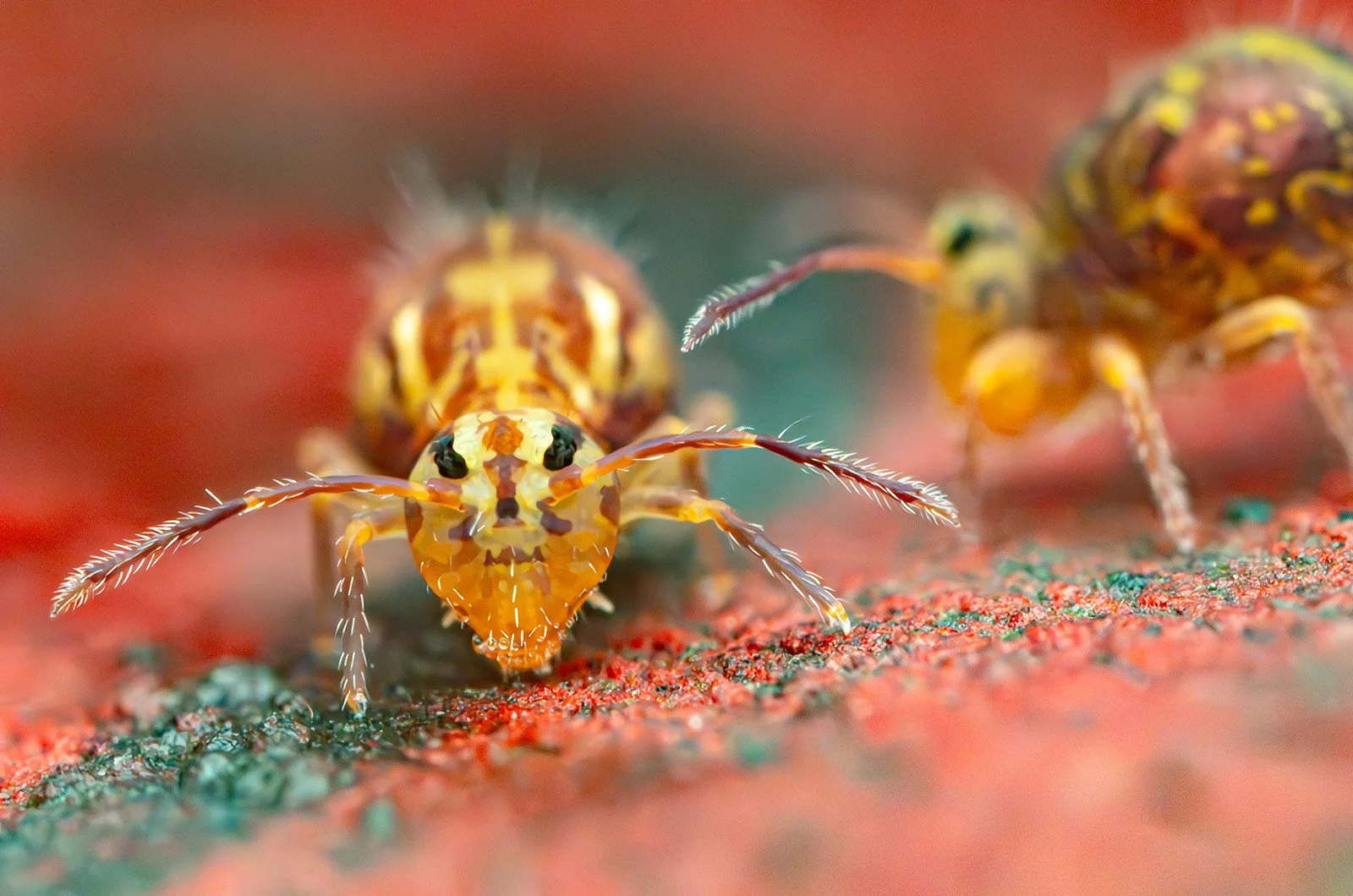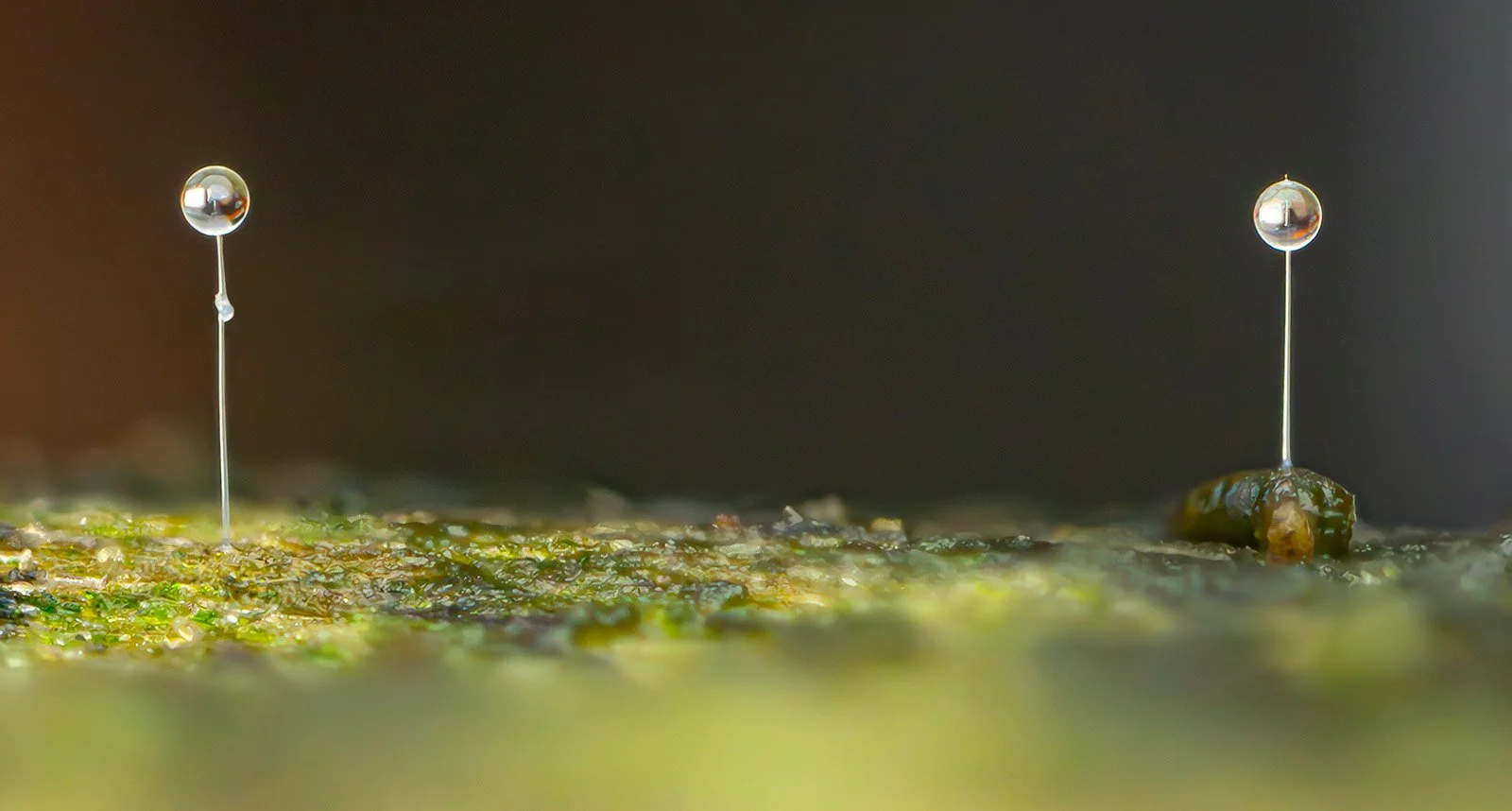#94 Dicyrtomina saundersi by Tim Jonas
Meet Tim Jonas, macro photographer!
Based in Wakefield, Tim is a photographer with a keen interest in capturing the richness of our region’s biodiversity through the art of macro photography. While his love for nature encompasses all creatures, great and small, his lens is often drawn to the intricate details of the smaller wonders of the natural world. Armed with high-magnification macro lenses, Tim brings these often-overlooked worlds into sharp focus, revealing their beauty and complexity in stunning detail.
Collembola are tiny, wingless hexapods. Once classified as insects, Collembola are now recognised as belonging to a separate group due to several distinct characteristics, including internal mouthparts, wingless ancestry, and unique features such as the furcula—a forked tail-like appendage used for jumping, which gives them the common name of "springtails."
Dicyrtomina saundersi
Springtails are among the most abundant and widespread soil-dwelling organisms on Earth, often found in leaf litter, soil, decaying wood, moss, and other moist environments. They play a crucial role in ecosystems by aiding in the decomposition of organic matter and recycling nutrients, making them essential contributors to soil health. Some estimates suggest that a single cubic meter of fertile soil can contain as many as 100,000 springtails.
Globally, there are over 9,000 known species of Collembola, with approximately 250 species identified in the UK. Tim’s chosen subject, Dicyrtomina saundersi, is the species he photographs most frequently due to its abundance locally.
For many, autumn represents the end of the macro photography season, with cameras packed away for winter to be dusted off in spring. But for Tim, this is when the season truly begins. As temperatures drop and moisture levels rise, leaves change colour and fall to the ground. Springtails emerge from their summer refuges in deeper soil layers and other cool, damp microhabitats, becoming more active on the soil surface, within leaf litter, and among decaying organic matter.
Springtail spermatophores
To the naked eye, springtails might seem unremarkable. Ranging in size from just 0.2mm (Megalothorax minimus) to around 6mm (Pogonognathellus longicornis), they are so small that spotting them can be quite a challenge. Yet, the macro lens enables Tim to peer into their tiny worlds, revealing a vast array of shapes, sizes, colours, and behaviours. Dicyrtomina saundersi is about 2–3mm in size and belongs to the order Symphypleona, also known as the globular springtails due to their round body shapes. Its body is a colourful patchwork of pale yellows and maroons with a dark multi-barred cross on the rear of the abdomen, which can be used for identification. It has a distinct head featuring antennae and retracted mouthparts for sucking or chewing, along with two clusters of simple eyes (ocelli). The segmented antennae are equipped with sensory structures, such as bristles and pores, that allow the springtail to detect vibrations, air movements, and chemical cues for finding food, mates, and navigating its environment. In Dicyrtomina saundersi, the antennae tend to change colour from yellow to maroon, which is another identifying feature.
Tim has photographed male Dicyrtomina saundersi depositing spermatophores onto the substrate. These tiny, spherical packets are placed on thin, hardened stems, allowing them to stand out from the substrate where they can be picked up by receptive females. Male strategies for attracting a female vary by species. Some perform elaborate courtship dances, while others lay spermatophores in large numbers, surrounding a female. Once a female picks up a sperm packet and ingests it through her genital slits, liquids within her body cause the packet to burst, releasing the sperm to fertilise the eggs. The female later lays the fertilised eggs onto the substrate. While laying the eggs, she coats them in faecal matter to protect them from disease and to conceal them from predators.
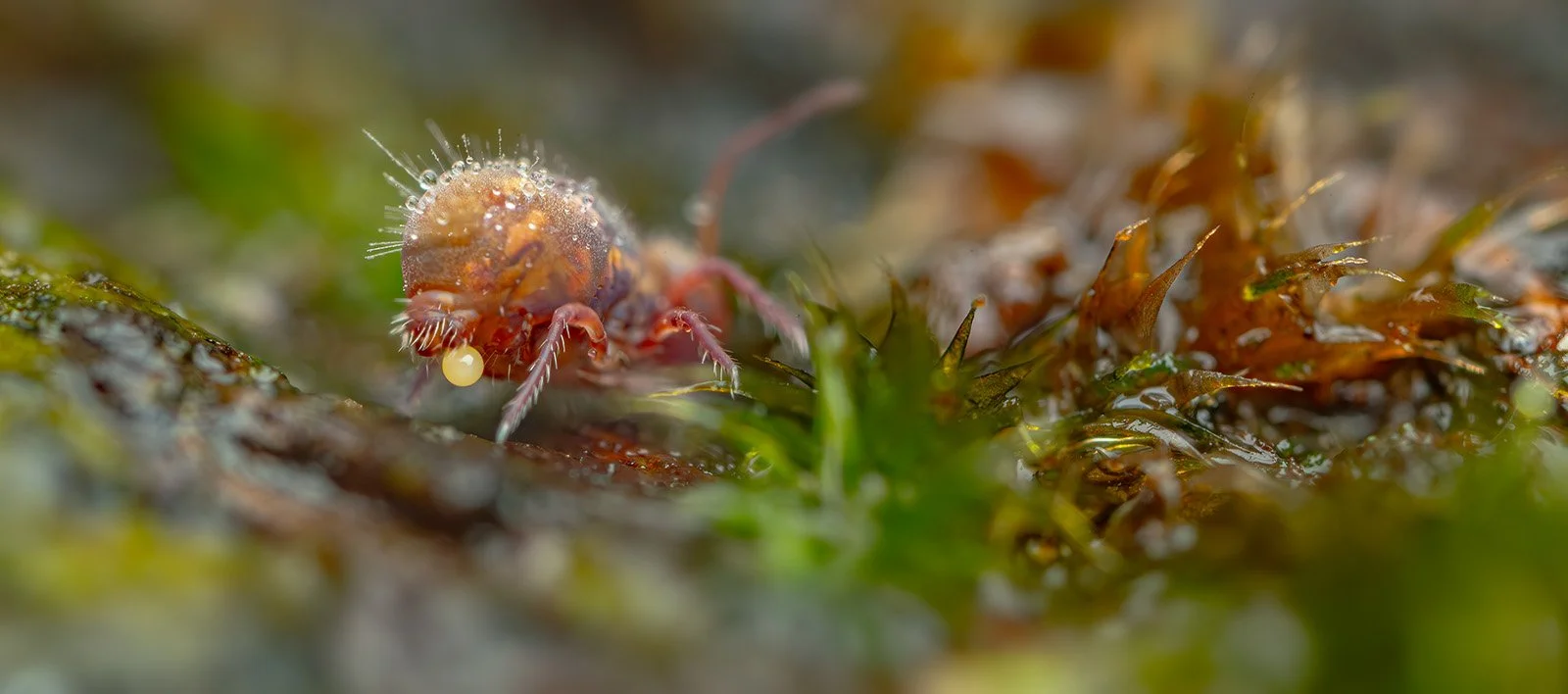
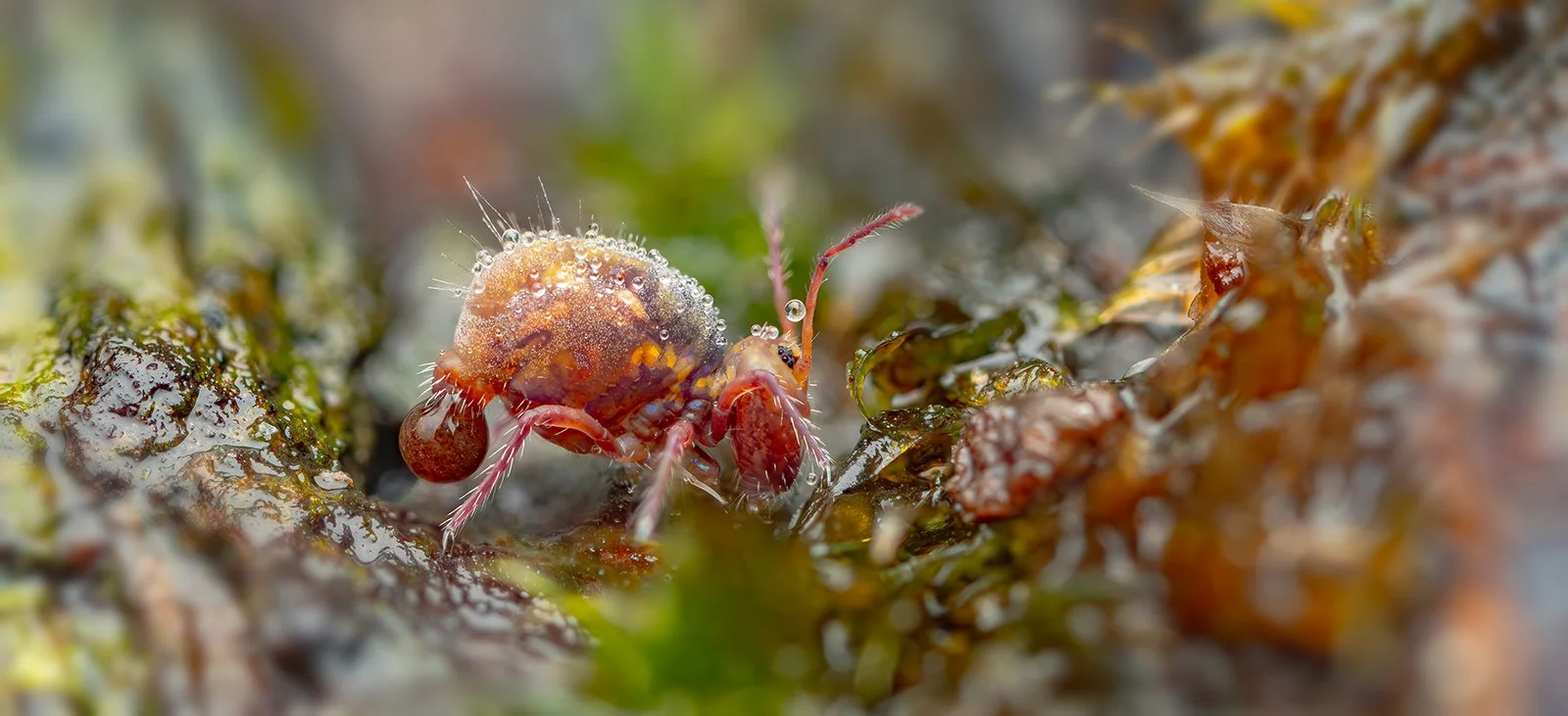
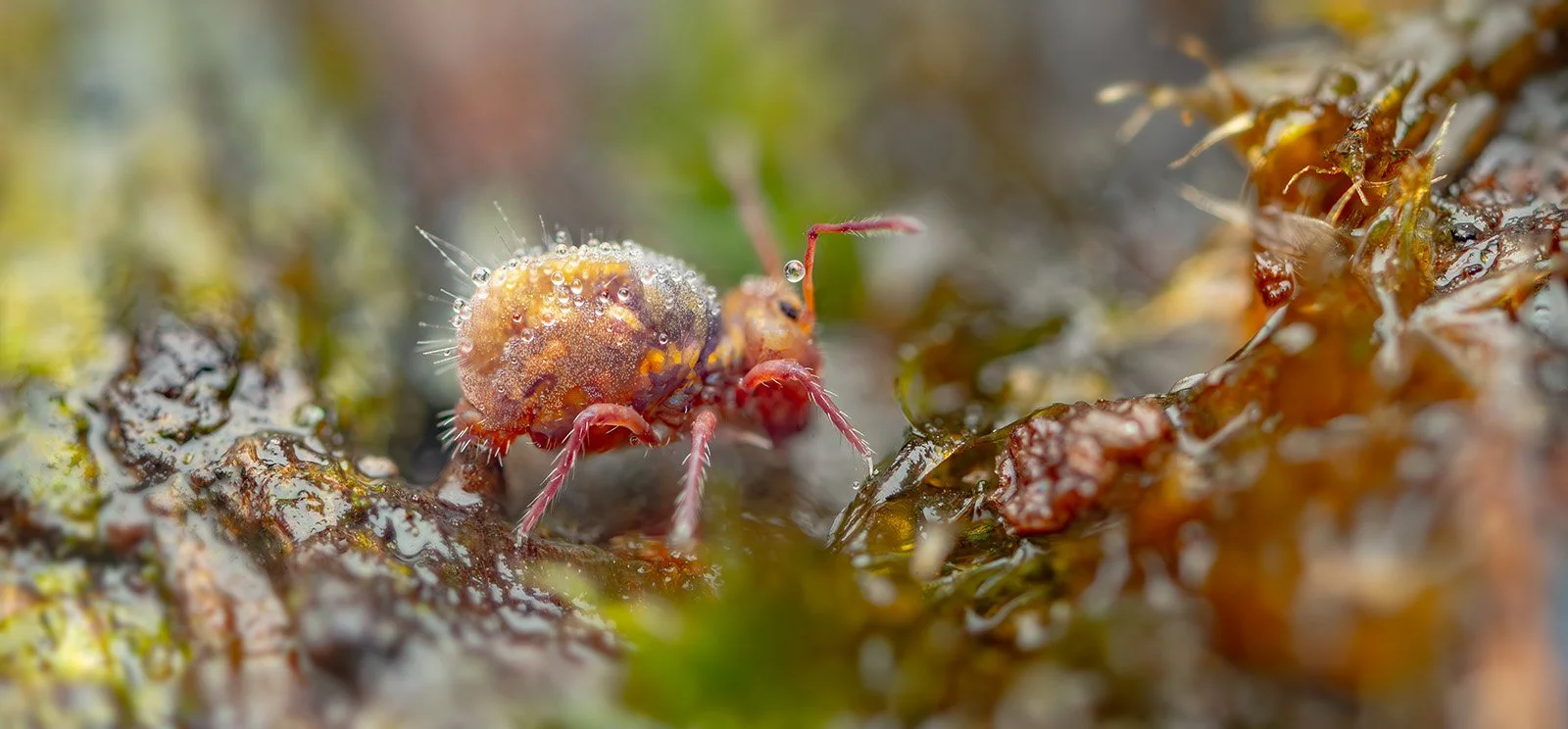
Springtails are highly sensitive to changes in their environment, such as pollution or habitat destruction. Their presence (or absence) can serve as an indicator of soil health and environmental quality. The actions we take can help springtails thrive; leave leaf litter, logs, and rocks undisturbed during warmer months, create compost piles and moist, shaded areas, and avoid using chemical pesticides.
Be sure to keep an eye out for springtails, the easily overlooked, unsung heroes of our natural world.
Recording and monitoring
To get involved in recording Collembola, you can use iRecord to submit your records, which can then be verified and added to the national datasets.
Further information and acknowledgements
You can find more information and resources on the Collembola Recording Scheme. To learn more about Collembola and other soil animals make sure to visit Andy Murray’s website A Chaos Of Delight as well as soil ecologist Frank Ashwood’s site Frankashwood.com. Additionally, consider joining the active UK Collembola group on Facebook to connect with other recorders and share information.
NEYEDC would like to thank Tim for his time and expertise in helping to create this blog.


